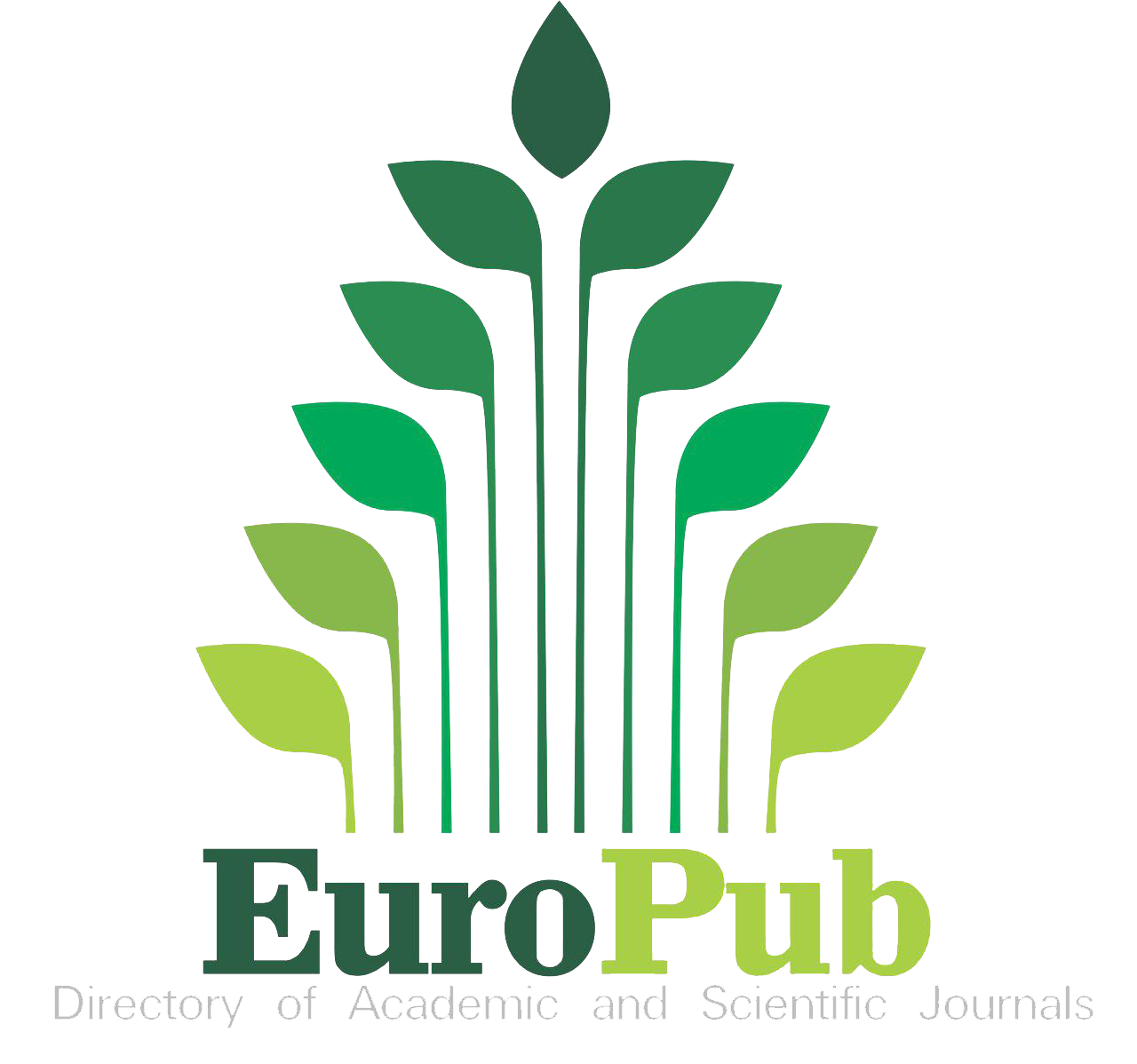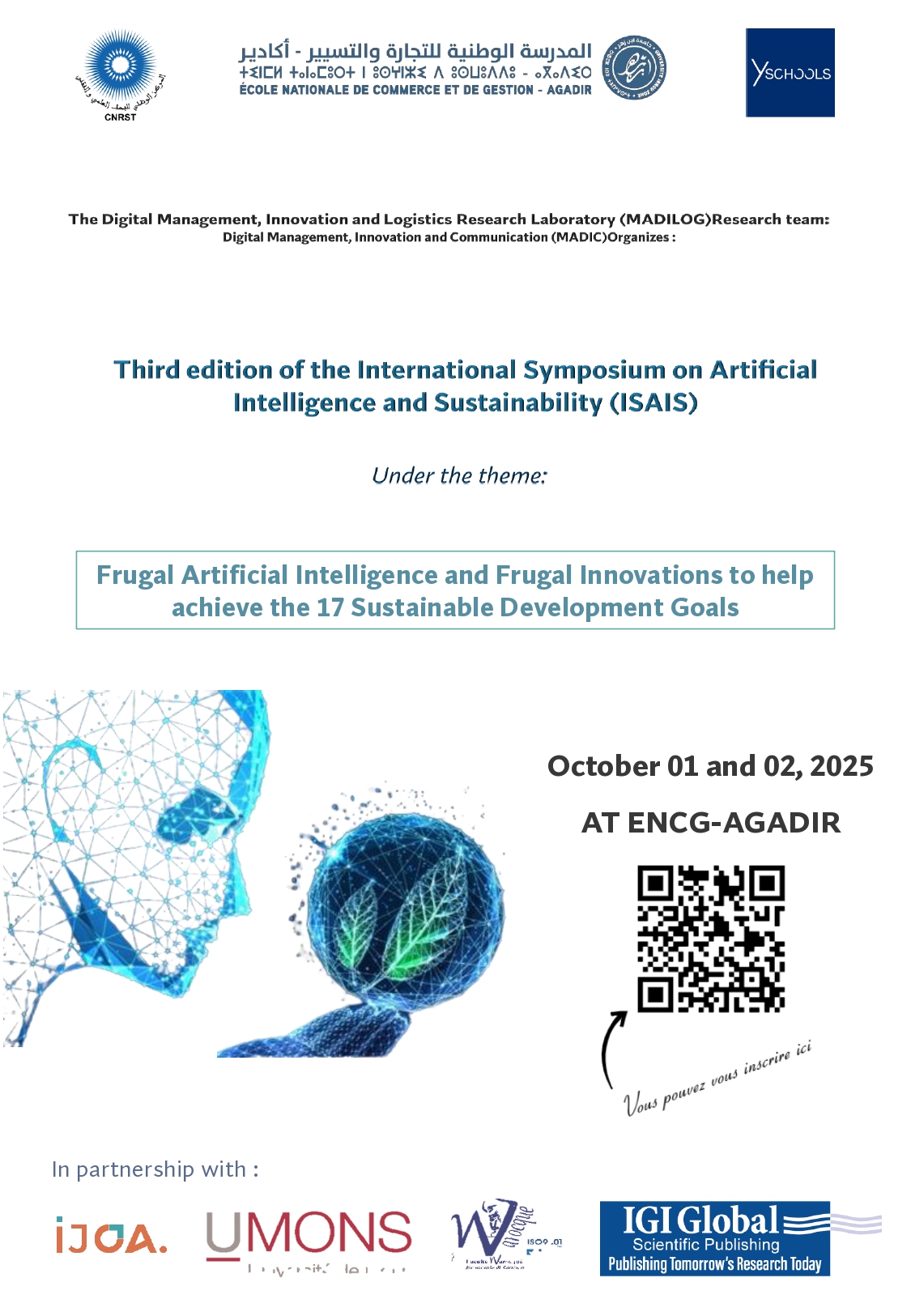The Influence of Tourism Infrastructure on the Tourist Satisfaction
The Case of the Agadir Destination
DOI:
https://doi.org/10.23882/ijdam.25190Keywords:
Tourism infrastructure, Tourist satisfaction, Satisfaction TheoryAbstract
This study investigates the impact of various dimensions of tourist infrastructure on visitor satisfaction in Agadir. Four dimensions were analyzed: physical infrastructure, cultural infrastructure, service infrastructure, and governance infrastructure. The results indicate that three of these dimensions physical, cultural, and service infrastructure have a significant effect on tourist satisfaction. In contrast, governance infrastructure did not demonstrate a direct relationship with tourist satisfaction.
The study employed a rigorous analytical model based on structural equation modeling, which facilitated an accurate assessment of the relationships between the variables under investigation. The findings validate the primary hypothesis, confirming that tourist infrastructure has a significant influence on the tourist satisfaction. These results are consistent with previous research highlighting the crucial role of infrastructure in visitor satisfaction.
References
Abubakirova, A., Syzdykova, A., Kelesbayev, D., Dandayeva, B., & Ermankulova, R. (2016). Place of tourism in the economy of Kazakhstan Republic. Procedia Economics and Finance, 39, 3-6
Abukari, H., & Mwalyosi, R. B. (2020). Local communities’ perceptions about the impact of protected areas on livelihoods and community development. Global Ecology and Conservation, 22, e00909.
Agyeiwaah, E., Adongo, R., Dimache, A., & Wondirad, A. (2016). Make a customer, not a sale: Tourist satisfaction in Hong Kong. Tourism Management, 57, 68-79.
Albayrak, T., & Caber, M. (2013). The symmetric and asymmetric influences of destination attributes on overall visitor satisfaction. Current Issues in Tourism, 16(2), 149-166
Alegre, J., & Garau, J. (2011). The factor structure of tourist satisfaction at sun and sand destinations. Journal of Travel Research, 50(1), 78-86.
Anderson, E. W., Fornell, C., & Lehmann, D. R. (1994). Customer satisfaction, market share, and profitability: Findings from Sweden. Journal of marketing, 58(3), 53-66.
Baker, D. A., & Crompton, J. L. (2000). Quality, satisfaction and behavioral intentions. Annals of tourism research, 27(3), 785-804.
Bartikowski, B., & Llosa, S. (2004). Customer satisfaction measurement: comparing four methods of attribute categorisations. The Service Industries Journal, 24(4), 67-82.
Chiu, W., Zeng, S., & Cheng, P. S. T. (2016). The influence of destination image and tourist satisfaction on tourist loyalty: a case study of Chinese tourists in Korea. International Journal of Culture, Tourism and Hospitality Research
Coghlan, A. (2012). Linking natural resource management to tourist satisfaction: a study of Australia's Great Barrier Reef. Journal of Sustainable Tourism, 20(1), 41-58.
Curtis, T. (2009). Customer Satisfaction, Loyalty, and Repurchase: Meta-Analytical Review, and Theoretical and Empirical Evidence of Loyalty and Repurchase Differences.
Erdogan, S. (2020). Analyzing the environmental Kuznets curve hypothesis: the role of disaggregated transport infrastructure investments. Sustainable Cities and Society, 61, 102338.
Firoiu, D., & Croitoru, A. G. (2013). Tourism and tourism infrastructure from the perspective of technological changes. Romanian Economic and Business Review, 8(2), 93-103.
Fornell, C., & Larcker, D. F. (1981). Structural equation models with unobservable variables and measurement error: Algebra and statistics.
Fuchs, M., & Weiermair, K. (2003). New perspectives of satisfaction research in tourism destinations. Tourism review, 58(3), 6-14.
Fuchs, M. (2002). Benchmarking indicator-systems and their potential for tracking guest satisfaction. Tourism (zagreb), 50(2), 141-155.
Füller, J., & Matzler, K. (2008). Customer delight and market segmentation: An application of the
three-factor theory of customer satisfaction on life style groups. Tourism management, 29(1), 116-126.
Ghaderi, Z., Hatamifar, P., & Khalilzadeh, J. (2018). Analysis of tourist satisfaction in tourism supply chain management. Anatolia, 29(3), 433-444.
Grundey, D. (2008). Managing sustainable tourism in Lithuania: Dream or reality?. Technological
and Economic Development of Economy, 14(2), 118-129.
Homburg, C., & Giering, A. (2001). Personal characteristics as moderators of the relationship between customer satisfaction and loyalty—an empirical analysis. Psychology & Marketing, 18(1), 43-66.
Jamal, T., & Stronza, A. (2009). Collaboration theory and tourism practice in protected areas: Stakeholders, structuring and sustainability. Journal of Sustainable tourism, 17(2), 169-189
Jie Li, J. W., & Carr, N. (2004). Visitor satisfaction: An analysis of mainland Chinese tourists on the Australian Gold Coast. International journal of hospitality & tourism administration, 5(3), 31-4
Kanwal, S., Rasheed, M. I., Pitafi, A. H., Pitafi, A., & Ren, M. (2020). Road and transport infrastructure development and community support for tourism: The role of perceived benefits, and community satisfaction. Tourism Management, 77, 104014.
Khan, A., Bibi, S., Lorenzo, A., Lyu, J., & Babar, Z. U. (2020). Tourism and development in developing economies: A policy implication perspective. Sustainability, 12(4), 1618.
Khadaroo, J., & Seetanah, B. (2008). Transport and economic performance: The case of auritius.
Journal of Transport Economics and Policy (JTEP), 42(2), 255-267.
Kavaliauskė, M., & Kočytė, R. (2014). Sustainable tourism development in Neringa region. Procedia-Social and Behavioral Sciences, 156, 208-212.
Lee, T. H. (2011). How recreation involvement, place attachment and conservation commitment affect environmentally responsible behavior. Journal of Sustainable tourism, 19(7), 895-915.
Liu, Z., Schindler, S., & Liu, W. (2020). Demystifying Chinese overseas investment in infrastructure: Port development, the Belt and Road Initiative and regional development. Journal of Transport Geography, 87, 102812.
MacKay, K. J., & Crompton, J. L. (1990). Measuring the quality of recreation services. Journal of Park and Recreation Administration, 8(3), 47-56.
Mathew, P. V., & Sreejesh, S. (2017). Impact of responsible tourism on destination sustainability and quality of life of community in tourism destinations. Journal of Hospitality and Tourism management, 31, 83-89.
Matzler, K., & Sauerwein, E. (2002). The factor structure of customer satisfaction: An empirical test of the importance grid and the penalty‐reward‐contrast analysis. International journal of service industry management
Matzler, K., Sauerwein, E., & Heischmidt, K. (2003). Importance-performance analysis revisited: the role of the factor structure of customer satisfaction. The Service Industries Journal, 23(2), 112-129.
Mano, H., & Oliver, R. L. (1993). Assessing the dimensionality and structure of the consumption experience: evaluation, feeling, and satisfaction. Journal of Consumer research, 20(3), 451-466
Moon, H., & Han, H. (2018). Destination attributes influencing Chinese travelers' perceptions of experience quality and intentions for island tourism: A case of Jeju Island. Tourism management perspectives, 28, 71-82
Nunnally, J. C. (1978). An overview of psychological measurement. Clinical diagnosis of mental disorders: A handbook, 97-146.
Pizam, A., Neumann, Y., & Reichel, A. (1978). Dimentions of tourist satisfaction with a destination area. Annals of tourism Research, 5(3), 314-322.
Qiu, Q., Zheng, T., Xiang, Z., & Zhang, M. (2019). Visiting intangible cultural heritage tourism sites: From value cognition to attitude and intention. Sustainability, 12(1), 132.
Raina, A. K. (2005). Ecology, wildlife and tourism development: principles, practices and strategies. Sarup & Sons.
Royer, I., et Zarlowski. P, (2003), « Méthodes de recherche en Management » Paris,Dunod ;
Seidahmetov, M., Aidarova, A., Abishov, N., Dosmuratova, E., & Kulanova, D. (2014).Problems and perspectives of development of tourism in the period of market economy (case Republic of Kazakhstan). Procedia-Social and Behavioral Sciences, 143, 251-255.
Shafiee, S., Ghatari, A. R., Hasanzadeh, A., & Jahanyan, S. (2019). Developing a model for sustainable smart tourism destinations: A systematic review. Tourism Management Perspectives, 31, 287-300.
Schofield, P., Coromina, L., Camprubi, R., & Kim, S. (2020). An analysis of first-time and repeat-visitor destination images through the prism of the three-factor theory of consumer satisfaction. Journal of Destination Marketing & Management, 17, 100463.
Slevitch, L., Mathe, K., Karpova, E., & Scott‐Halsell, S. (2013). “Green” attributes and customer satisfaction: Optimization of resource allocation and performance. International Journal of Contemporary Hospitality Management.
Song, H. (2012). Tourism supply chain management. Routledge.
Song, H., Li, G., Van Der Veen, R., & Chen, J. L. (2011). Assessing mainland Chinese tourists' satisfaction with Hong Kong using tourist satisfaction index. International Journal of Tourism Research, 13(1), 82-96.
Suhartanto, D., & Triyuni, N. (2016). Tourist loyalty toward shopping destination: the role of shopping satisfaction and destination image. European Journal of Tourism Research, 13, 84-102.
Sukiman, M. F., Omar, S. I., Muhibudin, M., Yussof, I., & Mohamed, B. (2013). Tourist satisfaction as the key to destination survival in Pahang. Procedia-Social and Behavioral Sciences, 91, 78-87.
Tenhenhaus, M., Vinzi, VE, Chatelin, YM et Lauro, C. (2005). « Modélisation de chemin PLS ». Statistiques de calcul et analyse des données, n° 48, p. 159-205.
Ting, S. C., & Chen, C. N. (2002). The asymmetrical and non-linear effects of store quality *attributes on customer satisfaction. Total Quality Management, 13(4), 547-569.
Truong, T. H., & King, B. (2009). An evaluation of satisfaction levels among Chinese tourists in Vietnam. International Journal of Tourism Research, 11(6), 521-535.
Turayev, B., & Atamurodov, U. (2021). Ways To Develop Infrastructure of Tourism estinations. Procedia of Social Sciences and Humanities, 1, 164-174
Wang, J., Huang, X., Gong, Z., & Cao, K. (2020). Dynamic assessment of tourism carrying capacity and its impacts on tourism economic growth in urban tourism destinations in China. Journal of Destination Marketing & Management, 15, 100383.
Yoon, Y., & Uysal, M. (2005). An examination of the effects of motivation and satisfaction on destination loyalty: a structural model. Tourism management, 26(1), 45-56.
Downloads
Published
How to Cite
Issue
Section
License
Copyright (c) 2025 Ranya QIYAD, Ouariti Ouafe ZEROUALI

This work is licensed under a Creative Commons Attribution-NonCommercial 4.0 International License.



 Portugal
Portugal









